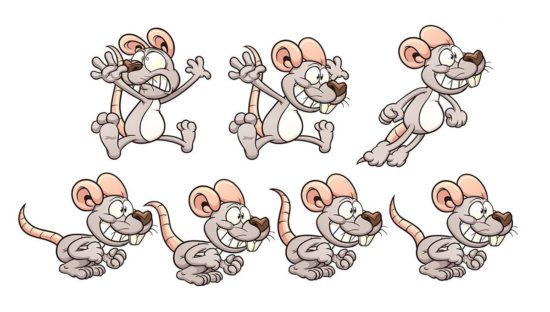In Mouse Count by Ellen Stoll Walsh, a hungry snake finds 10 mice on the grass and puts them into a jar. The last mouse cleverly sends the snake on a fruitless hunt for an even bigger mouse and the other mice tip the jar over and escape. In this activity, children investigate the different ways that they ten mice could be arranged when some are in the jar and some are on the grass.
Task Instructions
Day 1
- Read the story to the class. Encourage students to predict what will happen next.
- Explain that as you reread the story, the students need to act it out using props. Give each student a piece of green paper, a clear plastic cup and 10 cubes or counters.
- Ask students to pretend that the cup is the jar, the paper is the grass and the cubes are the mice. Have students start the story with all ten “mice” on the grass. Each time a page shows a new arrangement, explain that students should put that number of cubes in the plastic cup (the jar). For each arrangement, talk about what just happened. Ask, “How many mice in the jar?” and, “How many mice are on the grass?”
Day 2
- Read the story again to the class. Ask students to find different ways for the ten mice to be arranged, with some in the jar and some on the grass. Have plastic cups and cubes available for students, but allow them to use any tools in the classroom that will help them.
- If a students finds one way, ask him or her to find another way the mice could be arranged. If students find many possible arrangement, invite them to find all the possible arrangements.
- Have a class discussion about what the students discovered. Ask a few students to share how they represented the mice on their paper. Make sure the examples show a variety of representations, such as simple pictures, tallies, shapes, words, numbers or equations.
- As students share their representations, make a class chart showing these arrangements. One one side of the chart, use a blue marker to draw a jar as a label. On the other side of the chart, use a green marker to draw grass. Underneath the jar, list the number of mice that were in the jar, for example 4. Underneath the grass, write a plus sign and an equal sign to finish the equation. In our example, we would write + 6 = 10 across from the 4.
- Ask students to share how they found new arrangements. For example, they might talk about “opposites” (three in the jar and seven in the grass helped them find seven in the jar and three on the grass). They may have also systematically moved one cube at a time to find new arrangements.
Materials
- Mouse Count, by Ellen Stoll Walsh
- 8×11 green paper, 1 sheet per student
- Clear plastic cups, 1 per student
- Cubes or counters, 10 per student
Reference
Confer, C. (2005). Mouse Count. In Teaching number sense, First Grade. Sausalito, CA: Math Solutions Publications.

